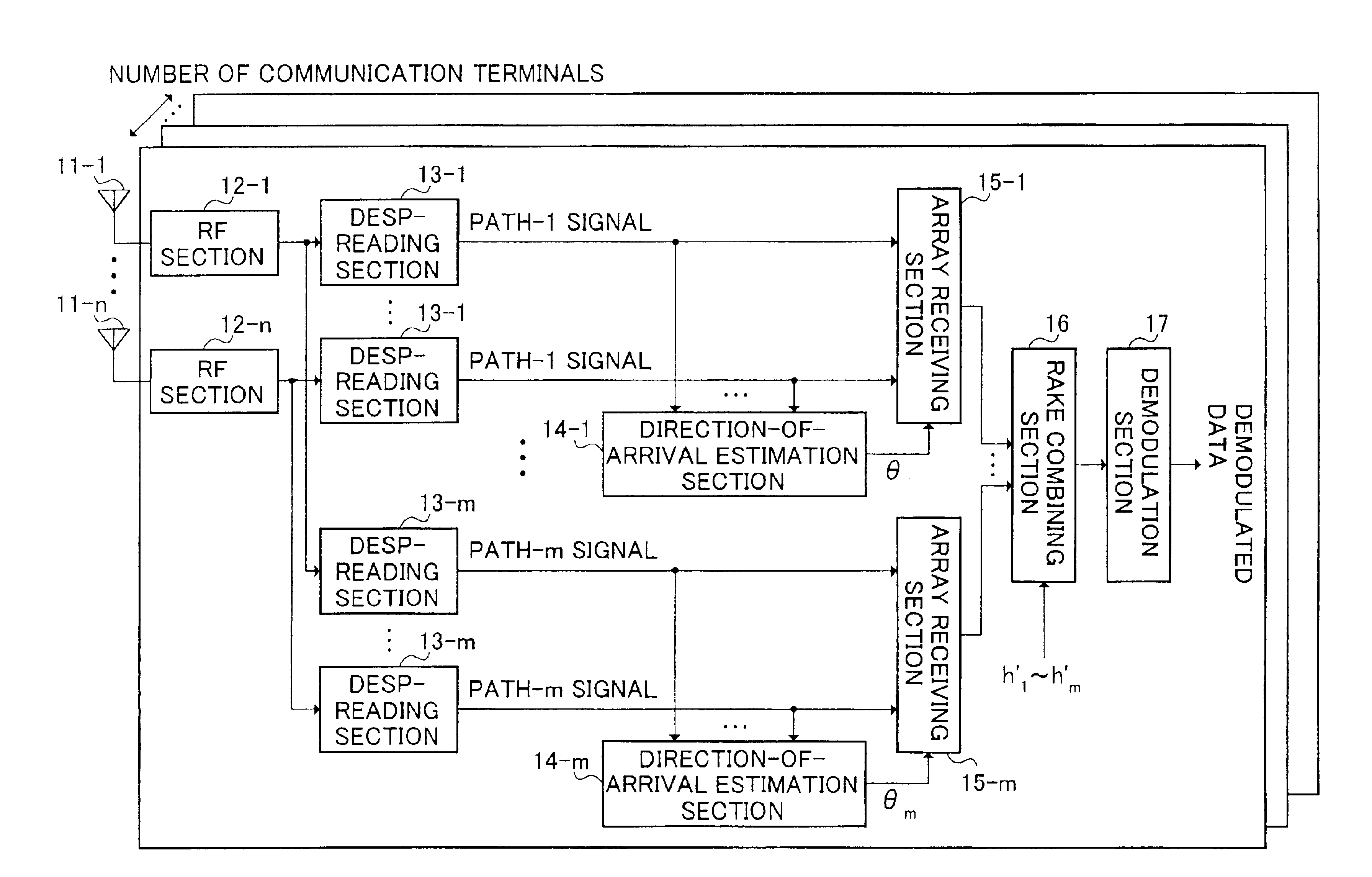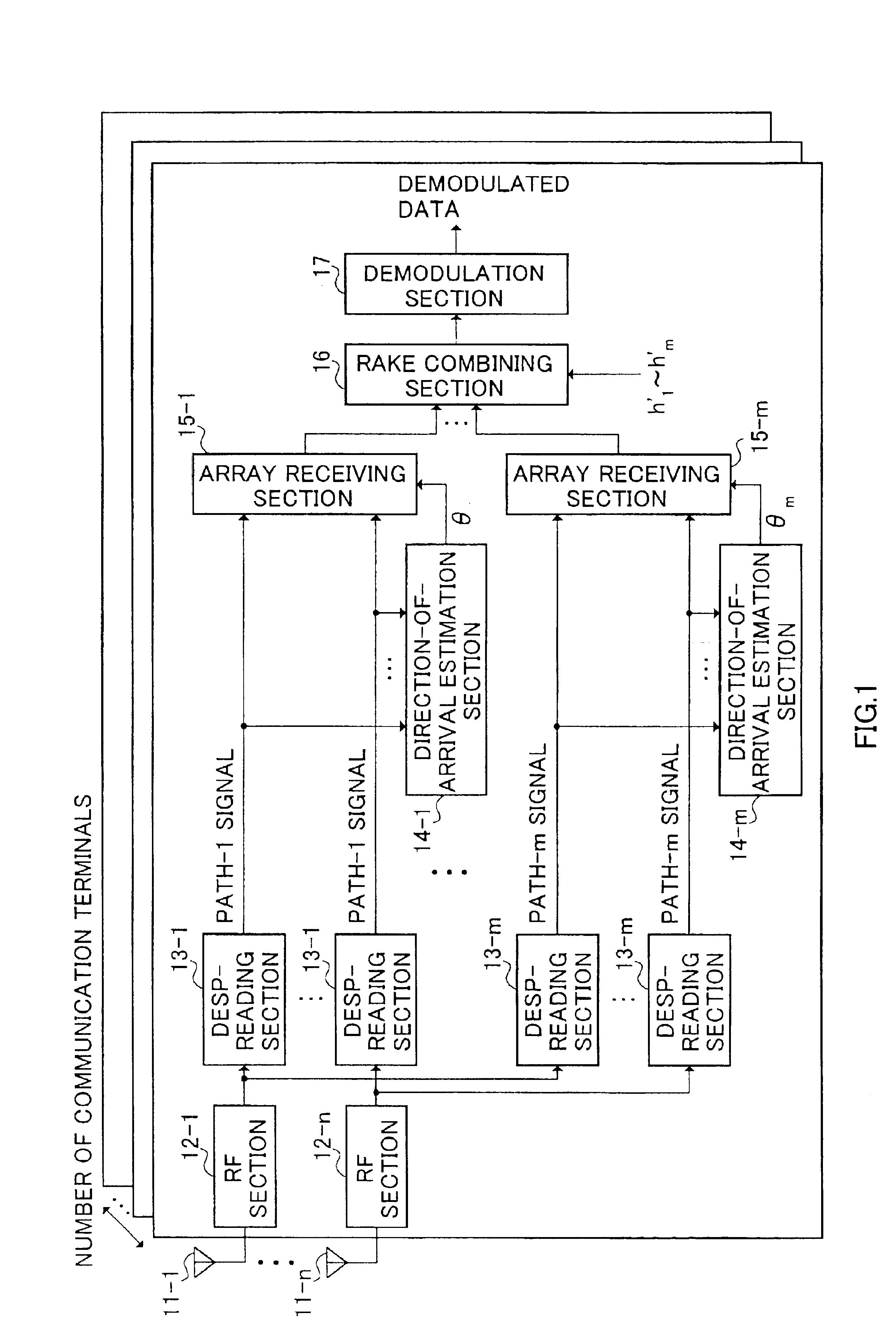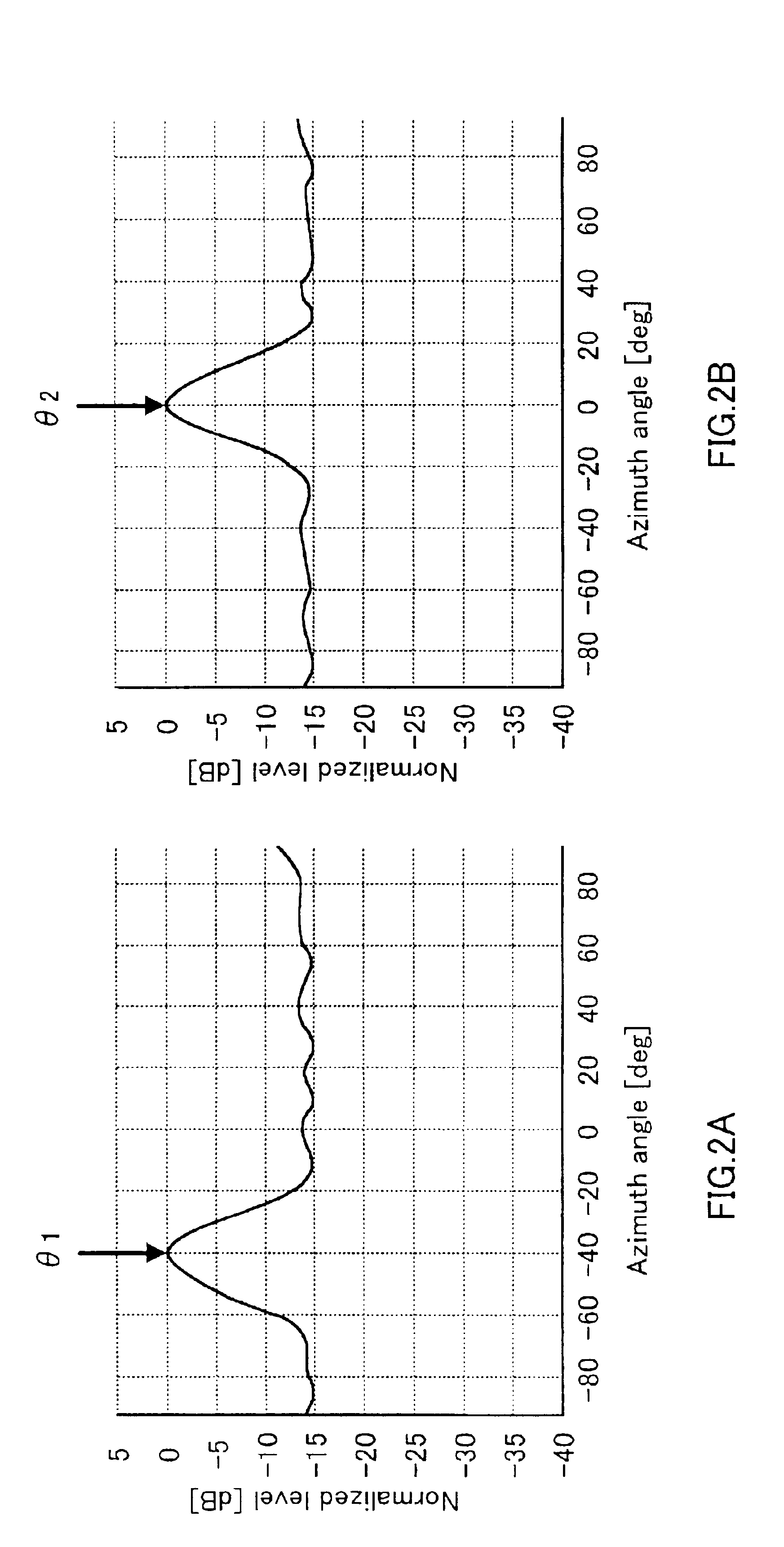Base station apparatus and direction-of-arrival estimating method
a base station and apparatus technology, applied in the direction of instruments, multi-channel direction-finding systems using radio waves, transmission monitoring, etc., can solve the problems of increasing the size of the apparatus, increasing the amount of operations according to the received quality of the signal, and reducing the operation amount of the base station apparatus.
- Summary
- Abstract
- Description
- Claims
- Application Information
AI Technical Summary
Benefits of technology
Problems solved by technology
Method used
Image
Examples
embodiment 1
[0034](Embodiment 1)
[0035]FIG. 3 is a block diagram showing a configuration of a base station apparatus according to the embodiment 1 of the present invention. Here, it is assumed in the base station apparatus that a plurality of antennas 101-1 to 101-n are arranged straight at intervals of the half wave-length of a carrier wave.
[0036]In the base station apparatus shown in FIG. 3, signals received through the antennas 101-1 to 101-n are input to despreading sections 103-1 to 103-m after predetermined radio processing (such as down conversion, and analog to digital conversion) in RF sections 102-1 to 102-n provided corresponding to each antenna.
[0037]The despreading sections 103-1 to 103-m perform despreading processing of the signals which arrive at the antennas 101-1 to 101-n through the paths 1 to m. That is, the despreading sections 103-1 to 103-m perform the despreading processing according to receiving timing of the signals arriving at the antennas 101-1 to 101-n through each p...
embodiment 2
[0062](Embodiment 2)
[0063]FIG. 5 is a block diagram showing a configuration of a base station apparatus according to the embodiment 2 of the present invention. The base station apparatus shown in FIG. 5 has a configuration in which a modulation section 301; an array transmission section 302; and a spreading section 303 are further provided in addition to sections shown in FIG. 3, and directions-of-arrival θ1 to θm which have been estimated in a direction-of-arrival estimation section 105 are configured to be used at signal transmission. Here, in FIG. 5, parts similar to those previously shown in FIG. 3 are denoted by the same reference numbers as those in FIG. 3, and detailed description will be eliminated.
[0064]In the base station apparatus shown in FIG. 5, the modulation section 301 modulates transmission data for output to the array transmission section 302. And, a direction-of-arrival estimation section 105 outputs estimated directions-of-arrival θ1 to θm to the array transmissi...
PUM
 Login to View More
Login to View More Abstract
Description
Claims
Application Information
 Login to View More
Login to View More - R&D
- Intellectual Property
- Life Sciences
- Materials
- Tech Scout
- Unparalleled Data Quality
- Higher Quality Content
- 60% Fewer Hallucinations
Browse by: Latest US Patents, China's latest patents, Technical Efficacy Thesaurus, Application Domain, Technology Topic, Popular Technical Reports.
© 2025 PatSnap. All rights reserved.Legal|Privacy policy|Modern Slavery Act Transparency Statement|Sitemap|About US| Contact US: help@patsnap.com



